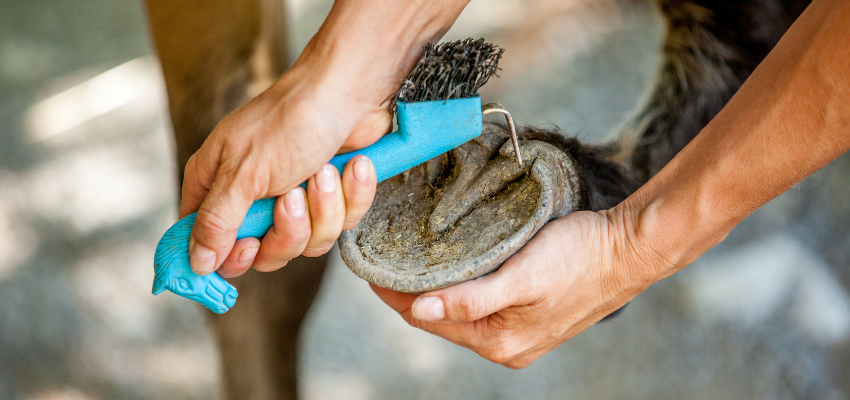Hoof thrush is a common issue that many horse owners face when it comes to the health and well-being of their equine companions. This bacterial infection can cause discomfort and lameness if left untreated, making it important for horse owners to be proactive in defending their horse’s hooves against this pesky ailment.
There are various strategies that can be employed to prevent and treat hoof thrush, ranging from proper hoof care and hygiene practices to utilizing specific treatments and products. By implementing these tactics, horse owners can help keep their horse’s hooves healthy and free from thrush, ensuring that they can continue to enjoy an active and comfortable lifestyle.
Understanding Hoof Thrush: Causes and Symptoms

Understanding hoof thrush is essential for any horse owner, as it can be a common and persistent issue. Hoof thrush is caused by a bacterial infection that thrives in dark, moist environments such as the hoof frog. This infection can lead to a foul smell, black discharge, and even lameness if left untreated. Recognizing the symptoms early on, such as sensitivity to pressure on the frog or visible black gunk in the hoof cleft, is key to preventing the infection from worsening.
Proper hoof care, including regular cleaning and keeping the hooves dry, can help prevent hoof thrush from developing in the first place. By being aware of the causes and symptoms of hoof thrush, horse owners can take proactive measures to protect their horse’s hooves and overall health.
Importance of Regular Hoof Care for Prevention

Regular hoof care is essential for preventing hoof thrush in horses. Proper trimming and balancing of hooves, along with regular cleaning and inspection, can help eliminate moisture and bacteria that lead to thrush. Additionally, ensuring that horses have a healthy diet and appropriate living conditions can also play a crucial role in hoof health.
By proactively caring for your horse’s hooves, you can decrease the likelihood of developing thrush and other common hoof issues. Remember, prevention is key when it comes to maintaining the overall health and well-being of your horse.
Key Strategies for Treating Hoof Thrush

To effectively treat hoof thrush in horses, it is important to prioritize good hoof hygiene practices such as daily cleaning and inspection of the hooves. Regularly picking out debris and mud from the hoofs frog area can help prevent the buildup of bacteria that leads to thrush. Additionally, keeping the hooves dry and well-ventilated can help create an environment that is less favorable for the growth of thrush-causing organisms.
Applying a medicated thrush treatment, such as a commercial thrush remedy or a homemade solution of diluted iodine or apple cider vinegar, can help combat active infections. In severe cases, consulting with a veterinarian for further treatment options, such as antibiotics or specialized hoof care products, may be necessary. By implementing these key strategies consistently, horse owners can effectively manage and prevent hoof thrush, promoting overall hoof health and soundness.
Conclusion
In conclusion, protecting your horse’s hooves from thrush is essential for maintaining their overall health and preventing potential lameness. By implementing strategies such as regular cleaning, proper hoof trimming, and providing a dry, clean environment, you can effectively defend against the development of thrush.
Additionally, the use of a high-quality hoof conditioner, such as Best Hoof Conditioner, can further support hoof health and protect against fungal infections. Remember, proactive care and regular maintenance are key to keeping your horse’s hooves healthy and strong for years to come.


